Growing blood in the lab, and talking to ET
In this episode, How researchers are growing new blood in the lab, the scientists planning for potential alien communications, and why fertiliser may be fooling bees’ ability to spot flowers...
In this episode
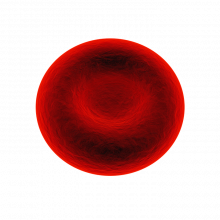
00:50 - A new way to grow blood in a laboratory
A new way to grow blood in a laboratory
Cedric Ghevaert, University of Cambridge
A new way to produce transfusable blood in the laboratory is being developed by UK researchers. Every day, a country the size of ours gets through about 2 tonnes of donated blood. At the moment, all of it needs to come out of someone else’s arm. But now researchers have found a way to grow more blood cells from donated blood that could be used to supplement traditional supplies. Cedric Ghevaert, from Cambridge University’s Department of Haematology, is one of the team behind a trial to put these lab-grown blood cells through their paces in real patients…
Cedric - What we have to do is to take stem cells that are present in anyone's blood, including donated blood, and we put them in special solutions with growth factors. It's a bit like growing plants and feeding your plants. And then over a period of 20 days thereabout, they will multiply, but they will also change their nature from a stem cell to a mature red cell.
Chris - And do they, to all intents and purposes, look like, smell like, taste like, and work like a normal red blood cell?
Cedric - Absolutely. We put them through their paces in laboratories through a series of tests before the clinical trial to make sure they absolutely behaved the same way as a donor derived red blood cell.
Chris - And you are obviously sufficiently happy that this works well enough and safely enough. You're now going to put these into real patients.
Cedric - We are actually starting very small with healthy volunteers and we only produce two teaspoons of those red cells to then do this clinical trial that is currently ongoing. We want to check whether these labs produce red cells that last longer in a circulation compared to donor derived red cells.
Chris - Why should they?
Cedric - It's simply because donated blood contains red cells that are newly born, but also red cells that have been circulated for two, three months that are very old and they will disappear from circulation quite promptly. Whereas the cells that are being produced in the laboratory all are born at the same time. So they're all young, so they should survive in a circulation average much longer than a donated blood.
Chris - These cells that we're talking about though they are fractions of a millimeter across. How on earth are you going to track a teaspoon full of those over time to work out how long they are there?
Cedric - We label them with a very, very small amount of radioactivity before we reinject them. And then we take a series of blood samples from the volunteers taking part in a trial who are receiving those blood cells. And then we use a machine to detect these very, very small amounts of radioactivity. Over time that radioactivity will fade because those red cells will gradually disappear from circulation. And as we measured the fade, that gives us an idea of how long those cells are surviving circulation.
Chris - And the advantage would be, if you have cells that live longer, a patient who needs a blood donation wouldn't need their blood transfusion as frequently because what you're giving them would last longer.
Cedric - Absolutely. This is absolutely transformational for patients who have got genetic disorders whose life really depends on being transfused regularly. At the moment they're transfused every two to three weeks. We could potentially transfuse them every six to eight weeks.
Chris - You're obviously comfortable that these cells are safe. One always worries when you take stem cells and then you grow them and stimulate them in the lab that they then turn into things that you would rather they didn't, like cancer cells for example. What checks and balances are there to make sure that can't happen?
Cedric - One of the big advantages is that red cells don't contain a nucleus, so they can't multiply, they can't become cancerous
Chris - But the stem cells can
Cedric - The stem cells can, but the purification of the product that we make in the lab is the last step and it takes away any cell that contains a nucleus.
Chris - So it's just the blood that's left over. So it should, in theory, be very safe. How much can you make? I know you're saying in this case that it's gonna be a couple of teaspoons full for the purpose of experimentation, but if this is gonna be practically used, you're gonna have to make a lot of blood. How scalable is this?
Cedric - It is scalable. Absolutely. And manufacturing a large quantity of cells is something that has really taken off in the last decade. But in particular, the pandemic has shown us how much more we can scale cell cultures. In this case it was to produce the vaccine, but some of those technologies are directly applicable to what we want to do with the red blood cells.
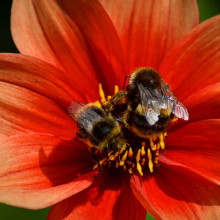
05:20 - Fertiliser affects how bees see flowers
Fertiliser affects how bees see flowers
Sam England, University of Bristol
Fertilisers are critical to modern agriculture: without the higher crop yields they provide, we’d all starve. But, fertilisers are typically made using ammonia, meaning they have a significant environmental footprint in the form of greenhouse gas emissions. They also produce algal blooms in rivers, reservoirs and even the sea. Now a new study suggests that - by affecting the electrical fields around flowers - fertilisers can also alter the way that pollinating insects, like bees, see them. Bristol University’s Sam England told Will Tingle how plants generate their electrical fields, and what fertilisers might be doing to put bees off…
Sam - The electric fields around flowers kind of have two main sources that we're aware of. One comes from their interaction with the atmosphere. So these flowers are conductors to some extent in the same way that the metal in your wires and your electrical appliances at home are conductors. Actually, plant tissue is quite conductive too. Now, the interesting thing is that these plants are obviously stuck in the ground, but they're pointing up above the ground into the atmosphere. And the atmosphere actually has an electric field in it too. And when this gets really strong, that's when you see things like thunder and lightning. But even in fair weather, there is still some amount of vertical electric field in the atmosphere. What this means is that the grounded plant relative to the air around it, actually has an electric field coming off of it because it's not at the same electrical charge as the surrounding air. But also in addition to these kinds of electric fields that are generated by their interaction with the atmosphere, the plant itself also has all kinds of physiological processes going on inside it, where it's transporting ions and signaling within the plant between cells also generate an electric field external to the flower. So those are the two main sources of electric field around flowers that we know of at the moment.
Will - And how would insects such as bees use these electrical fields to detect the presence of flowers?
Sam - Something that's really cool and that we've only really discovered over the last decade or so is that a couple of different species of insects are able to detect electric fields in air. And the way that they do this is that basically hairs on their body get pushed around by the electric field. If you think about the same way as when you charge a balloon up with your hair, the balloon can kind of push your hair around. Essentially the same thing is happening with the tiny little hairs on these bees as they're entering into the electric field around flowers. And the cool thing is that it might actually provide some useful information to them. In theory they could be using it to just detect the location of flowers, but of course they have excellent senses of smell and also vision that help them do that. But something that we have discovered previously is that when a bee visits a flower, it modifies that electric field around the flower for some amount of time on the order of a few minutes. And so then a bee that comes along after that first bee might be able to detect that difference in the electric field and essentially use it as a cue as to whether a bee has visited that flower recently and that maybe the nectar might be diminished because it's been visited recently. So it might basically give these bees a bit of a clue as to whether there's a good amount of nectar in that flower or not.
Will - What is it about synthetic fertilisers that alters the detectability of these flowers?
Sam - We try to unravel this a little bit in our study, but for sure this is something where the exact mechanisms need to be delved into in a little bit more detail. We think there's probably, again, two main ways that this is happening. One is that it just modifies the electrical properties around the surface of the flower, but also in the air around it by changing things like the humidity, but also the conductivity like the electrical conductivity on the surface of the flower. And this essentially means that the electric fields travel in a different way through the material which can make them stronger or weaker. And in the case of the fertilisers that we looked at, it seemed as if they actually make the electric fields stronger, which might be quite confusing to the bees. The other way that it might be having an impact is that a lot of these harsh chemicals that are found in synthetic fertilisers can stress the plant out. And when they do this, that will basically cause the plant to start moving ions around, kind of signaling within the plant between different cells to essentially tell other parts of the plant that maybe we're in a bit of trouble here, which again, that will change the electrical profile of the flower.
Will - Finally, what would be the ramifications on insect populations and their relationship with flowers because of this discovery?
Sam - This is one of those things where there's really a huge arsenal of evidence that's beginning to accumulate that there are just so many different ways that a lot of our activity and a lot of the chemicals that we're introducing into the environment are having quite adverse effects on quite a few different species of insects. We already know that a lot of fertilisers and pesticides are quite harmful towards pollinating insects like bees. And our study really just adds another dimension to how that's happening. But of course that does somewhat optimistically open potentially new avenues for how we can try and mitigate these negative impacts in the future as we continue to develop these technologies.
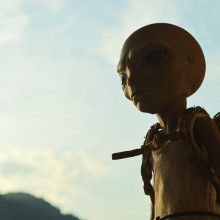
10:53 - How will we communicate with aliens?
How will we communicate with aliens?
John Elliott, SETI
Humans have always looked up at the stars and wondered whether we might be sharing this universe with other forms of intelligent life. One is St Andrews University’s John Elliott, who coordinates for the newly-launched SETI Post-Detection Hub - that’s the Search for ExtraTerrestrial Intelligence. He told James why we need to have a plan in place for when the inevitable “close encounter” occurs in the future…
John - The post detection hub is, when we've discovered something, whether it's a distant signal or even an artefact - a myriad of scenarios - it's the bit where people say "what next?" And we are the "what next." We need to coordinate all the different disciplines, all the different scientific endeavours together, such as we have a framework, a methodology, by which we then know whatever scenario it is, we have a plan on how to deal with it.
James - I'm sure you get bombarded with movie references, but what springs to mind when you talk about this coordinated effort is Close Encounters of the Third Kind, when they're receiving those light and audio signals and the team of government led officials are there, furiously typing away, trying to crack what the communications are.
John - The whole point of the plan is that we'd have forethought in what we need to do and we'd have done many years of research to plan this. The scenarios you mention in films often are, "Well, let's get the codebreakers involved." No! An analogy is, in the Second World War, with the enigma code, we were cracking a German code. Now, we knew it was German. Alright, it was encoded, but we knew what the source language was and we knew we had to try and translate it into something we understood. We're dealing with the unknown. Everything I've created; mathematical models, algorithms, all the dirty stuff that's underneath it, all has to deal with how can we make sense of something we know nothing about in the first place.
James - Probably difficult to get my head around just the basic principles you have to start from, but could you give me an idea? Obviously it's going to depend on what sort of communication we get for you to then be able to do something with it. What sort of eventualities have you prepared for so far?
John - If we receive something, just say like a binary bit stream - loads of ones and zeros - if you looked at billions of these coming in, no one could make sense of it, and if it had no resemblance to any human languages we particularly know you couldn't translate it into something. It wasn't like making up your own Rosetta Stone. I've devised algorithms that slide along it at variable windows - it's pattern finding. Once you can find patterns, no matter where they are - because fundamentally the speaker has to make it comprehensible to the hearer - so whatever communication system's being used it has to have that sort of underlying structure. If there is an information type structure in there which would flag up intelligence, you already know that you've got something special, and you build up and try and piece it together like a jigsaw as best you can.
James - It feels like as a species, people are coming round much more to the idea - as the scale of the universe becomes more apparent to the layman when they see images from the James Webb telescope, better science communication from astronomers, etc. - there's almost a building consensus that intelligent life is a firm possibility.
John - What's happened more recently is we've been discovering more and more of these Exoplanets around distant stars. So what we call exoplanets, we're finding thousands of them. In fact, we're finding them really around every other star. And if you think about just our own galaxy having at least 200 billion stars in it, we're talking then the same sort of numbers for planets out there. In fact, if you had multiple planets around most systems, you may be going towards a trillion planets in our own galaxy. That's just our galaxy. There's 125 billion in the observable universe. To think there's no life out there - I think there's probably even microbial life in our own solar system. But intelligent life, within a thousand light years of where we are, we've probably got at least a handful, if not more potential intelligent civilizations sitting out there.
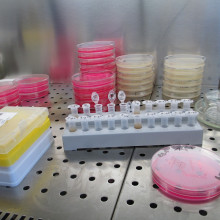
16:17 - Tri-protein signature indicates prediabetes
Tri-protein signature indicates prediabetes
Julia Carrasco Zanini, University of Cambridge
This week, scientists at the University of Cambridge have found some markers in the bloodstream that can flag up individuals on the verge of developing diabetes. Intervening early in cases like this, can help patients to take action sooner to avoid the consequences, or even not develop diabetes at all. But existing, traditional techniques for doing this can be less reliable and they’re inefficient. The new approach can help to change that. With us is Julia Carrasco Zanini, who did the work.
Julia - There are a subset of people with pre-diabetes that can only be identified through a very inconvenient and time consuming test. This is called the oral glucose tolerance test, which essentially involves giving people a sugar drink and then, two hours afterwards, taking a blood sample and measuring their blood glucose levels. Now the new test that we are proposing would only require a one off blood sample to measure three proteins that would enable us to predict the outcome of this oral glucose tolerance test.
Chris - So these are chemicals that are washing around in these people's bloodstreams, and you're saying if we measure those, they can predict what would happen if we were to feed those people a whole heap of sugar and tell us if they were at risk of diabetes?
Julia - Yes. Those three proteins would then enable us to classify individuals that would be predicted to be at high risk of having this specific type of prediabetes.
Chris - How did you find the three chemicals? Because there are obviously millions of different molecules in the body. How did you hone in on those three?
Julia - So we have a really large study with over 11,000 people in which we performed this oral glucose tolerance test, but in whom we'd also taken a prior blood sample where we measured around 5,000 proteins circulating in their blood. So then the question really was, out of these 5,000 proteins, can we identify those markers that are very informative to do this prediction? Every single time that we want to make the prediction, we don't want to measure again 5,000 proteins. So then for this we developed a machine learning framework, which essentially enabled us to extract those three proteins that were considered the most predictive of the outcome of this oral glucose tolerance test.
Chris - I suppose you're sorting through a biochemical haystack here, aren't you? You're saying we've got millions of molecules we could consider. You honed in on 5,000 to start with. And you're just saying "what, of those, when the person has this situation where they're at risk of developing diabetes, which ones consistently are changed either up or down relative to a normal person." And those are the ones you then have found that are the most predictive?
Julia - Yes.
Chris - How reliable is it?
Julia - If we were able to implement it along with diabetes screening strategies such as the NHS diabetes prevention programme, we could actually reduce the number of oral glucose tolerance tests that would need to be performed to identify one of these people with pre-diabetes by half.
Chris - So it's quite a big difference. How long before a person develops diabetes would they go positive on your test?
Julia - So this is one of the things that would require further follow up studies and trials that are large enough specifically to assess the effectiveness of these three proteins.
Chris - There are lots of databases available now, aren't there? The UK Biobank is one where, over the last 20 years, people have given blood samples, had very close follow up, and we've got good histories on what happened to those people. Presumably you could go to big data sets like that and now begin to comb through those looking at the same molecules and test it that way.
Julia - Absolutely. I think it's really important to consider absolute risk in people that have high levels of these three proteins, yes.
Chris - So what sort of a difference could this make then if this did become policy and they did decide to turn this into a test? We can look at the practicalities of that in a moment, but what sort of difference could you make if this were implemented instead of the current practice?
Julia - It would enable us to identify, at the early stages, the diseased people who are at very high risk. And then of course this would be very beneficial because it is known that behavioural and lifestyle interventions are really effective in delaying and preventing the onset of type two diabetes.
Chris - You could give people preventative advice? So if I did this test and it found that I was at higher risk of developing diabetes, you are saying that would give me advanced notice and I could make changes that would reduce the chance of that happening?
Julia - Yes, absolutely. Because these people remain undetected for so long, they don't really know that they are at high risk and that they should make these behavioural modifications.
Chris - In those people, we're slamming the door after the horse has bolted. Whereas with what you are doing, you give people some warning beforehand so there's still time to intervene meaningfully.
Julia - Yes, absolutely.
Chris - Is it easy to detect these proteins? Because at the moment you've got a powerful laboratory to do this. If this were to be turned into a test, how practical is that?
Julia - So this is one consideration that has to be taken into account before thinking this could be implemented in clinical practice because how we measure these proteins in blood actually really matters. So in our study for example, we compared the measurements for these three proteins with two different technologies and we found good agreement between them. However, if we were to roll out this more widely, it is very likely that we would have to develop a single robust universal test that could be rolled out in a wide range of clinical settings.
Chris - Does it miss any cases? Because that's the other important thing, isn't it? It's very good to have a test that finds people really fast and gives us loads of lead time, but if it misses critical cases, that's dangerous.
Julia - I think this is one of the things that would really require a larger trial to be able to specifically say how effective are these three proteins and how many people they miss and how many people they identify. And ultimately the cost effectiveness of a strategy such as this for healthcare systems.
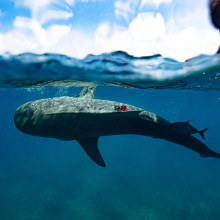
22:30 - Shark cameras find new largest seagrass plain
Shark cameras find new largest seagrass plain
Ollie Shipley, Beneath The Waves
The field of marine biology has been recruiting new members to study and measure marine life: the marine life itself. A study off the coast of the Bahamas has discovered the largest seagrass colony in the world. So large, in fact, that it pushes the total amount of known seagrass on the planet up by 40%. This seagrass forest was discovered when a team of scientists strapped cameras to Tiger sharks, which is no mean feat, and watched where they went about their day. Dr Ollie Shipley, from organisation Beneath The Waves, spoke to Will Tingle about their new recruits’ findings, including the obvious question: How do you attach a camera to a shark?
Ollie - The way that we explain it to people, it's almost like a NASCAR pit crew. And what we basically do is we strap the camera or the package because it's not just a camera, remember we've got other sensors. We've got a satellite tag, a radio tag on this package as well so we can find it when it falls off the animal. And we use biodegradable cable ties to basically fix that camera package through the fin of the animal. And the cable ties are secured by a piece of equipment that's called a galvanic time release. And what that is, is it's basically a dissolvable link that dissolves in seawater and the kind of dissolution time is pre-programmed. So that thing will dissolve within about four to six hours typically. And then the whole package basically falls off the animal and through a satellite and a radio tag, we can basically then go and locate that package. Once it's off the shark, we then remove all of the hook, take the cables off, and let the animal swim on its merry way. So all of that happens in about eight to 10 minutes typically.
Will - Given that all of the technology we have, all the sensory equipment we have available to us, satellites and ocean scanning equipment. Why did you feel the need to strap a camera to a shark?
Ollie - We've been putting tags on animals for the last 30-40 years, some of these satellite tags. But we really don't know a lot about what goes into their daily routine. And I think the way that the technology has developed over the last five to six years, we're now able to explore and observe high precision information on what these animals are doing every minute of every day for this study, whenever you strap a tag onto an animal, it's likely going to take you to a really important place because these animals are making calculated decisions every day of their life. They're trading off energy versus the cost of actually moving from one place to another. And so all of their decisions are calculated. So the chances are, if you strap a tag onto an animal, it's gonna take you to somewhere that's pretty important for that individual or that population or that species. For this study, we kind of utilized that concept and we used the cameras strapped onto these tiger sharks to quantify the density of seagrass that they were swimming over. And we were able to extrapolate those kinds of seagrass density measurements and use it to 'ground truth' information from satellites to basically quantify or measure the largest seagrass ecosystem in the world.
Will - And when you say ground truthing, what does that mean?
Ollie - Ground truthing is basically confirming.Because a lot of these measurements are made from satellite and there's sometimes quite a bit of error associated with that, and that that can be used to things like cloud cover or if the water isn't particularly clear on a certain day, for example. And so you actually have to go in there and empirically measure the density of the seagrass in this case. So you can confirm that what the satellite derived data is telling you is true.
Will - What have the cameras on these sharks reveal to us about seagrass distribution?
Ollie - Well, they've revealed that the area that we were working in, that The Bahamas, houses an incredible abundance of seagrass. We had an idea that it was there, but we weren't really sure how much. And so through strapping these cameras on these tiger sharks, they've really revealed how kind of expansive and dense these seagrass ecosystems are on The Bahamas banks. And it's only through that that we're able to confirm that this is the most significant, largest seagrass ecosystem in the world, which is crazy.
Will -
And do you know of any other shark camera equipment that's going on? Maybe new discoveries could be made somewhere else?
Ollie - This is a technique that has been utilized in a few different species before. So there's a group that are using them in sea turtles to kind of map similar things because sea turtles also interact quite abundantly with seagrass meadows. But I think this is where innovation really gets exciting. This is a proof of concept that has led us to an incredible discovery. And so I think the world really is our oyster in applying this sort of technology to other animals as well. And we certainly have plans to do that in various parts of the world.










Comments
Add a comment